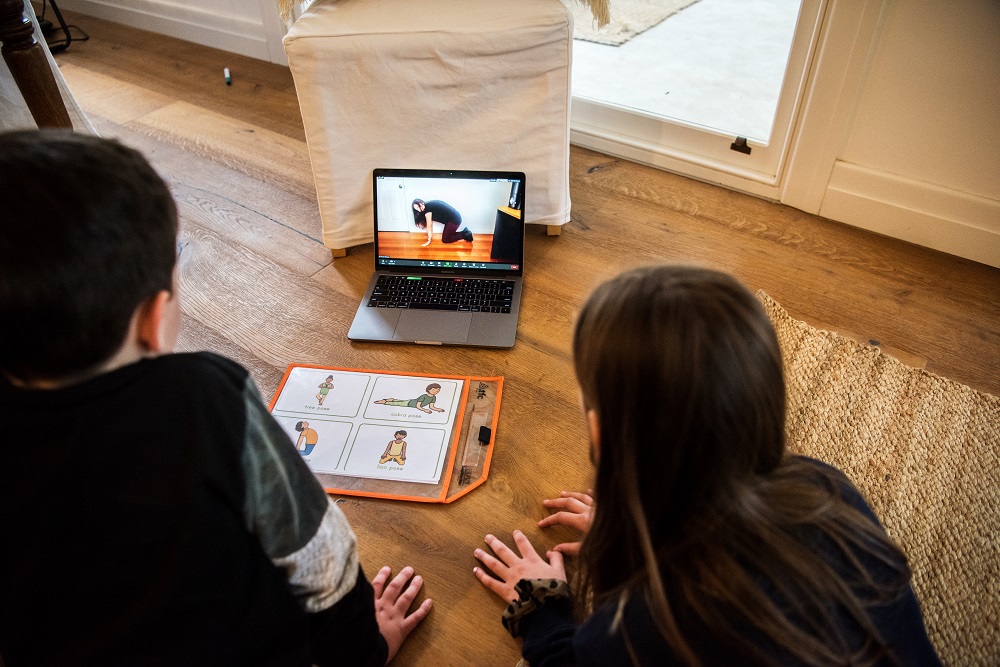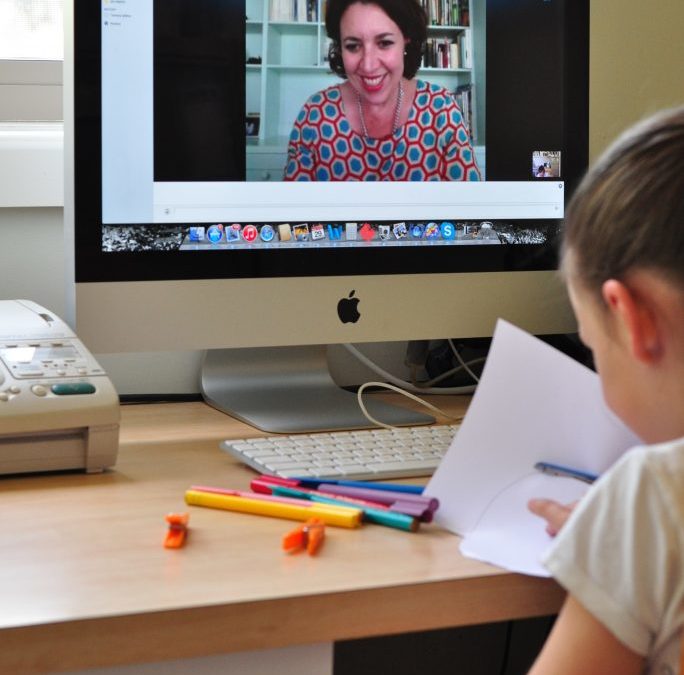Hello and welcome to Therapy Connect conversations. My name is Megan Walker, your host. Today Simone Dudley and Sue Cameron are going to talk to us about the technology that you need to have a successful telehealth consult.
Sue we’re going to start with you. So when someone’s getting started with telehealth, I’m imagining that you might often have people who get a little bit worried about what they’ll need in their home or wherever they’re joining the consult. Can you just paint the picture for us? What device do you recommend that someone has onboard for their telehealth appointment?
Yes sure, Megan. That is a question that we’re very often asked and people who are a bit uncertain about telehealth are often worried about the technology, but in the end, it’s really not such a big deal. Most people have got devices available to them these days. So for telehealth, you obviously need to have an internet connection and then you need to choose a device. So you can either choose to have a computer. That could be a laptop or a desktop, but obviously a laptop is more portable and could be moved so that we can get a good view of the child and the person who’s helping them.
So we might have a laptop on a table, we might want to be able to see that the family, and the parent and the child. And sometimes we need to be able to see the activities that they’re working on that are on the table between them. Sometimes we’ve got children who are very busy and active or might want to see them in the playground or kinder or in their backyard, so often an iPad might be a better choice. I did want to mention Megan that during COVID one of the really good things that happened was that the NDIS recognized that some people don’t have these devices and they made funding available for some families to be able to buy low-cost iPad or low-cost computers, laptop computers.
Oh, that’s great news. And so Simone, tell us from your perspective in therapy, when would you recommend using a laptop over an iPad?
Laptops are really versatile. What’s great about a laptop is it’s easy to stand up. You can change the angle of the camera, depending upon the position that you put the laptop in. Often the laptops have a slightly larger screen size, so it’s easier for the participants to really engage with therapists and see any material that might be on the screen. The biggest advantage with a laptop over an iPad is the interactivity options. The ability to interact with some digital media is greater, where you use a mouse to be able to control the screen, such as with drop and drag functions.
Okay, great. And Sue when would you prefer an iPad? What type of scenario would be better?
Well, if you’re not relying on those interactive functions, or you’ve got a very young child or perhaps an adult who’s working at home and you don’t need that interactivity, an iPad can be really suitable. So if you’ve got a child who’s very young and they are on the mat near the coffee table, you can prop the iPad up against the leg of the table and you can give the parent advice and say, “Look, I can’t see exactly how they’re sitting,” or, “I can’t see how they’re reaching. So can you just move it slightly?” We are always helping the families so that we can get the best views to be successful at what we’re doing. Another example is if you’re working with an adult and how they’re functioning in the kitchen, for instance, an iPad that can be moved around the kitchen, depending on what they are doing and show the cupboards and the layout and all that sort of thing can be really useful in that situation.
Okay, great. And Simone, I know that you and Sue and what you’ve set up in Therapy Connect is purposely easy for people to use your telehealth system and that sometimes people can click a link on their iPad and on their iPad, so they’re using two. I know that sounds a bit tricky, but just talk us through, when would you have those two screens in play and why?
Sure Megan. Well, it’s not probably common, but there might be times that it’s really helpful to have another camera angle. So if a therapist is working with a young child, for instance, on fine motor function, or if they’re reading a book and they need to see what’s going on at the desk level. We also want to be able to engage with a person’s face, so then sometimes using two devices can be really helpful because of that second camera angle.
Okay, fantastic. And Sue, at the other sort of level of simplicity, if we’re just going phone only, if people really can’t get access to an iPad or a laptop, is it ever possible to do sessions over the phone Sue?
That’s a good question. It’s certainly not ideal. I have had a situation where I worked over a telephone with a family who lived in Papua New Guinea and they didn’t have access to any other device. Ideally, everyone would live near the local therapy clinic and you’d be able to go for the appointments when you needed them or they could come to your house, but that’s not the situation for many people around Australia and overseas. I would say that a laptop would be top of the list for flexibility and usefulness. An iPad has its place and can be used. And a telephone could perhaps be used as a very last resort in some cases. But if you can’t get a good view of the child and the family member or helper or childcare together, then it perhaps limits the functionality of that device.
Sue I’m going to come back to you in just a moment as we’re wrapping up for your thoughts around how people can get their hands on the right kind of equipment. But just before we have that question, Simone tell us, what are the practitioners using at their end to run the therapist session?
Great question, Megan, because it can vary very much depending upon the practitioner’s technology skills and what they have access to, but primarily also what the client needs are. I think what we have to remember is the success of a telehealth session will not hinge on the technology. We’re really looking for practitioners that are really clinically competent and have that level of clinical expertise when they’re working with their clients on goals. Having said that, I know that a lot of practitioners really like to have a large screen. Sometimes a second monitor hooked up with an external camera, and sometimes they might even use a second camera therein to be able to demonstrate a particular task or demonstrate a feature depending upon the goal of the client. It is very varied, very custom, and very individual Megan.
It’s become an added skillset for therapists now to have that bit of extra technology skill. Sue tell us, how can people get access to the equipment that they need?
Well, if people would like to know whether they’re eligible to access a device through their NDIS plan, they can certainly get in touch with Therapy Connect and we can advise them about what’s needed for their session. For all the people that starting with our service, we provide a clinical services planning session, and people connect via internet, and via video conference for that session. If people would like advice about the best devices they can contact us. And we have a 1300 number, which is on our website www.therapyconnect.com.au or 1300 757 806.
Wonderful. And we’ll put that in the notes where people are watching this video as well. And Sue and Simone, just to wrap up our conversation, if people who are watching this video are thinking, “Oh, wow, that’s really interesting. I’d like to learn more about Therapy Connect.” Sue would you like to just give us a brief sort of summary at the end to say the types of clients that you look after and also the opportunity for therapists who are watching, who might be interested in working with Therapy Connect?
Sure. We have a focus on people of the ages 0 to 18 years, but we also can offer some services to adults. We’re registered with the NDIS for therapeutic supports and early childhood, early intervention supports and people can, get in touch with us via our website using the registration form. We’re always looking for therapists who might also live in remote areas and find it difficult to access a job. We have lots of clients who have difficulty accessing services, and it’s a great place to work for people who have difficulty accessing a job as well. There’s a “We’re Hiring” page on our website and people are always welcome to contact us through that.
Wonderful. And I’ve had the pleasure of speaking with some of your very big team and they are based all across Australia, and they just love the flexibility of working with you and the different types of clients that they can help and support and being able to fit your wonderful work in around their lives and achieve that work-life balance. So thank you both so much for talking us through the practicalities of telehealth devices. And we look forward to speaking with you in future interviews. Thank you both.




